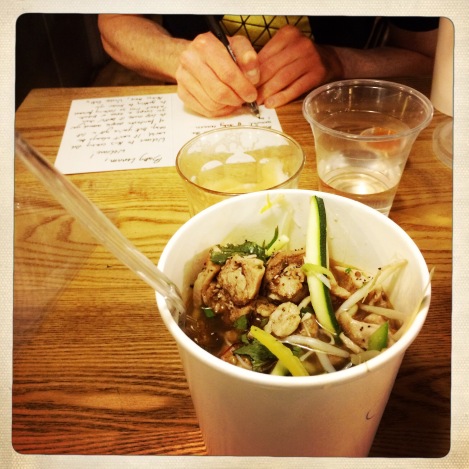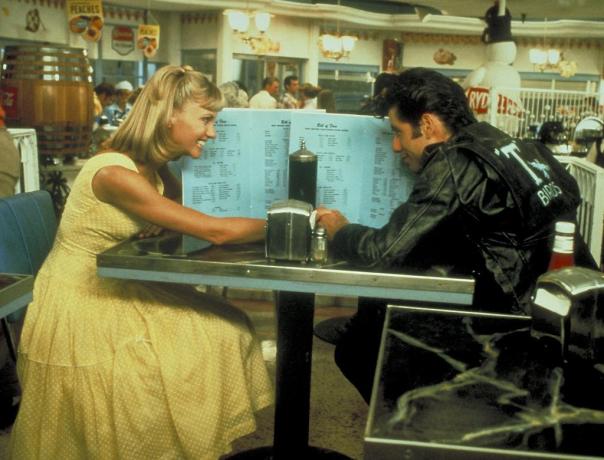In my search to discover more about our eating culture I spoke to Griff Holland, co creator of Friska – a healthy fast food restaurant set up by Griff and his business partner Ed Brown in 2009. There are currently six Friska’s located across Bristol as well as a recently established place (as they refer to them) in Birmingham, so their menu and ethos is clearly being accepted across the South West and Midlands.
Friska’s mission is to ‘redefine your expectations of how a breakfast and lunch place makes you feel’, so a small feat then. I asked Griff about how they were redefining peoples expectations; whether the restaurant trade caters for its customers needs or did it try to lead customer choices. Here’s what he said:
Steven Sales: In your opinion what is the most important meal of the day?
Griff Holland: Lunch followed by Breakfast (surprisingly)
SS: Which is the most popular Friska dish?
GH: Our HotBox’s are our best sellers but the actual dish would depend on the season.
SS: Do you consider your menu reflects society’s current food preferences, or are you aiming to initiate a change in what people eat?
GH: We hope our menu reflects people’s increasing interest in the (culinary) world around them and the increasing awareness that people have in the food they are eating from a quality and provenance and sustainability point of view.
SS: What characterises Friska’s main customer base?
GH: They are typically young(ish) professionals, active and happy. They are Interested in the world around them and have a certain “full of life” personality.
SS: Does Friska target specific groups of customers?
GH: City professionals.
SS: How do you target them?
GH: With a relevant, interesting and good looking voucher via loyalty App, through good word of mouth / reputation / etc etc.
SS: You highlight your eco/responsible business ethos on your website. Why do you believe it is important to share this information?
GH: Because it’s a nice thing to share with customers and helps develop and better represent the brand.
SS: Does this enhance Friska’s appeal?
GH: I think so
SS: What key factors influence people to choose Friska?
GH: Consistency, speed of Service, good Service, good Food, brand.
SS: Since opening the business, have you noticed any changes in customers’ eating habits? (perhaps reflected in how many people takeaway or eat in, the time people spend eating etc)
GH: [People are] more open to new and “different” dishes.
SS: You use ‘ready to go’ containers even for customers choosing to dine in. Has this concept changed the eating habits of your customers or simply responded suitably to this general shift in Bristol/UK?
GH: It’s because our offer is geared around quick service and therefore we want to make it as easy and fast, whether eating in or taking away.
SS: Has bench seating played a role in changing people’s eating habits?
GH: No
SS: Thank you.
So what do people want from the places they eat? If we take Griff’s experience it would seem that people want healthy food from a range of cultures, from a place that is eco friendly and ultimately quick. All these objectives sit happily with me. Healthy food, responsibly sourced shouldn’t be an unachievable goal and the guys at Friska are making a great job of it.
 (pictured Pho chicken noodles)
(pictured Pho chicken noodles)The idea of speed does seem to have had the biggest impact of peoples dining habits. Whether it’s a case of getting back to work within your allotted lunch time or the fact that places like McDonalds, KFC and even Whetherspoons have reduced the amount of time we now find acceptable to wait for food; speed of service will impact your decision to dine at the same place again. To counteract this Friska has even removed the use of tableware (ceramic or otherwise) in an attempt to increase service times. My Pho Chicken Noodle dish (shown above) was presented in this a paper container, despite a decision to dine in.
When asked whether bench seating has changed peoples dining habits, Griff said no. However, I think bench seating has impacted our dining experience, not only at Friska but across the county. During busy periods, one may find themselves sat next to complete strangers, the smaller tables having been taken first. Bench seating removes a sense of ownership (however brief) we have when dining; we’ve all claimed ownership of a table at some point by draping jackets over chairs etc. Eating is a personal ritual that is not easily shared; and bench seating is likely to make you hurry rather than delay your stay.
This seating arrangement twinned with ‘one time use’ tableware signify that we are clearly eating our meals quicker. Whether this is the restaurant meeting the needs of its customers or manipulating our dining rituals is a path to explore. In regards to Friska, as Griff mentioned, their ethos is geared around quick service and from repeated personal experience they do this well.
However, could this notion (necessity for some, obsession for others) of speed be the beginning of the end of ceramic tableware?
